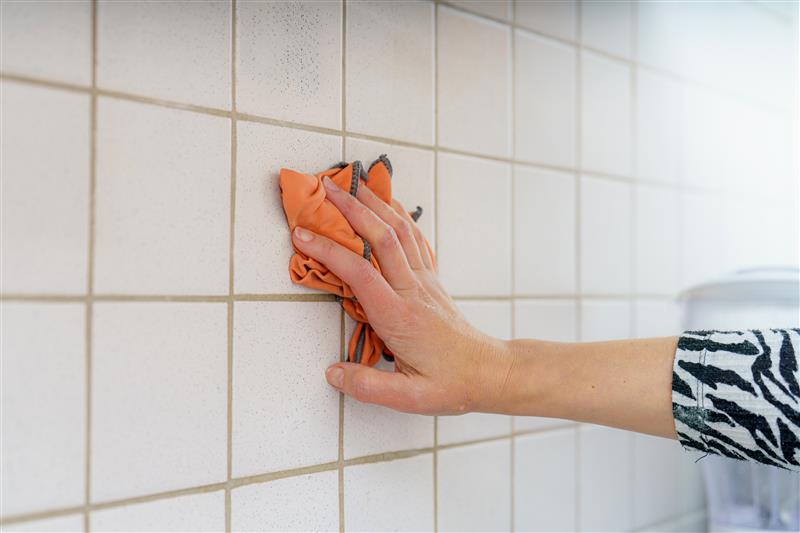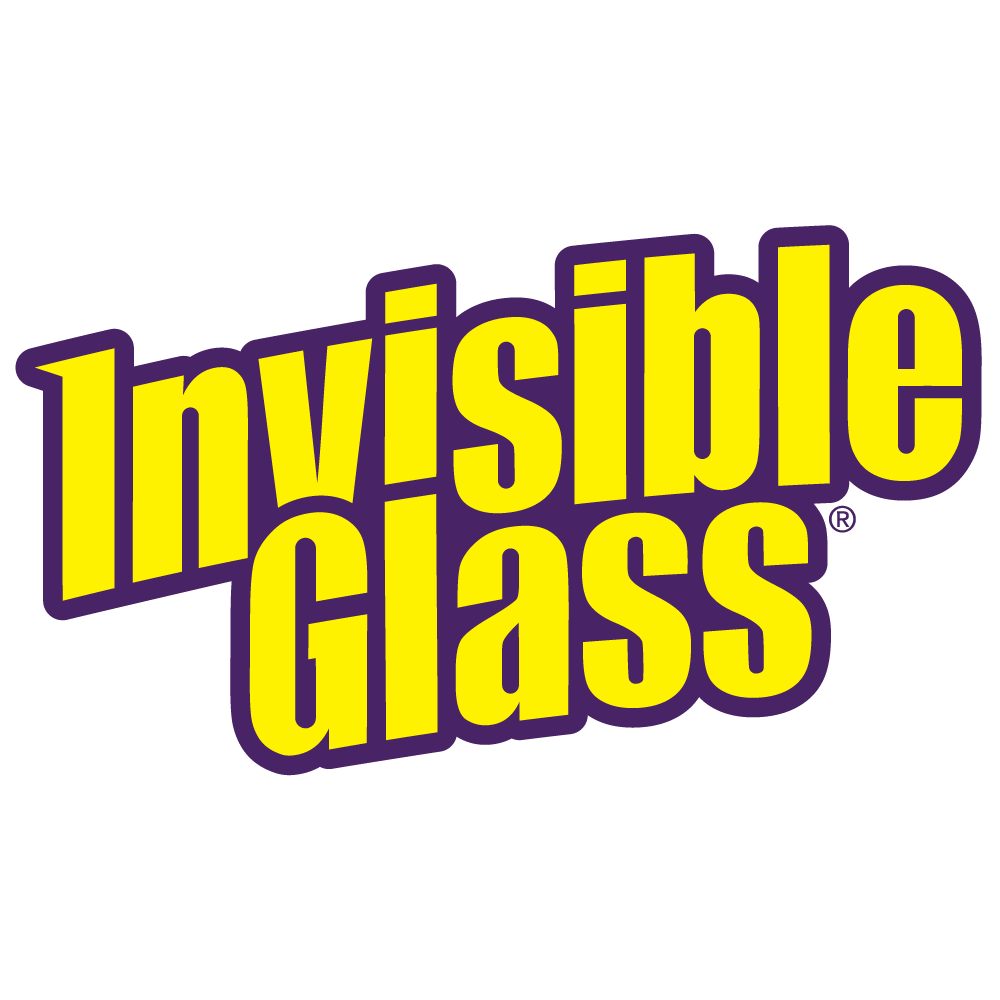
Glass backsplashes instantly elevate a kitchen. They reflect light, add depth, and give the space a sleek, modern finish. But their beauty comes with a challenge: glass shows everything. Fingerprints, cooking splatter, and watermarks stand out quickly, and a quick wipe often leaves behind streaks or smudges that look worse than before.
The key is treating glass differently from tile or stone. With the right approach—and the right products—you can keep a backsplash sparkling and streak-free. This guide covers why glass can be tricky, the mistakes that lead to smears, and the proper methods for restoring a clear, polished look.
Why Glass Backsplashes Show Dirt and Streaks
Glass backsplashes have a smooth, reflective surface that makes every mark visible. Unlike textured tile, they don’t hide residue in pores or grout. Instead, fingerprints, smudges, and splatters sit right on the surface, where light reflects off them, making them stand out even more.
The placement doesn’t help either. Positioned behind stoves and sinks, glass backsplashes take the brunt of everyday mess. Cooking oils, tomato sauce splashes, steam, and hard water all leave behind residue. Even a quick wipe can make things worse if the wrong cleaner or cloth is used, leaving streaks and haze instead of a clear shine.
Common Mistakes When Cleaning Glass Backsplashes
Before diving into the best methods, it helps to recognize what makes glass look worse instead of better. These are the most common cleaning errors:
❌ Using paper towels – They shed fibers and leave lint behind that clings to glass.
❌ Spraying with ammonia-based or harsh household cleaners – These can cause streaks, leave residue, or damage nearby finishes like cabinets and counters.
❌ Scrubbing with abrasive sponges – Glass scratches more easily than most people realize, and a single mark is noticeable under bright lighting.
❌ Wiping in circles – Circular motion tends to redistribute oils and create visible swirl patterns.
Each of these habits contributes to the dreaded “worse than before” look, where streaks, haze, and uneven shine remain even after you’ve spent time cleaning.
How to Clean a Glass Backsplash Without Streaks
The right approach makes all the difference. A non-abrasive technique, the correct cloth, and a streak-free cleaner keep glass surfaces looking clear and polished. Follow this simple process:
-
Dust first. Use a dry microfiber cloth to lift loose dust or crumbs before spraying anything. Dusting prevents grit from dragging across the surface.
-
Choose a streak-free cleaner. A dedicated product like Invisible Glass Home Glass Cleaner is specifically formulated for glass, leaving no residue and no oily film. Unlike multipurpose sprays, it won’t catch the light and highlight streaks.
-
Spray the cloth, not the surface. Apply the cleaner directly to the microfiber, not the backsplash. This helps control overspray near outlets, grout lines, or wood trim.
-
Use the “S-technique.” Wipe in a smooth, overlapping “S” motion from top to bottom. This avoids swirl marks and prevents grime from being pushed back onto cleaned areas.
- Buff dry. Flip the cloth to a clean, dry side and lightly buff away any moisture. Buffing leaves the glass sparkling and streak-free.
Dealing with Stubborn Spots
Everyday cleaning doesn’t always handle grease, watermarks, or dried food splatter. Use the correct method for each type of buildup:
|
Problem |
Solution |
Why It Works |
|
Oily splatters |
Spray Invisible Glass onto a microfiber towel, hold it over the spot for a few seconds, then wipe clean. |
Softens oils before removal, reducing streaking |
|
Mineral deposits (hard water marks) |
Mix equal parts distilled water and white vinegar. Apply this solution with a microfiber cloth and wipe. Finally, apply Invisible Glass and wipe clean. |
Vinegar dissolves deposits, and the rinse restores streak-free clarity |
|
Dried sauces or sticky residue |
Gently lift with a plastic scraper or the edge of a credit card, then follow with Invisible Glass application and wipe. |
Removes buildup without scratching, leaving a polished finish |
Stick with microfiber cloths, gentle cleaners, and light pressure to keep the glass looking its best.
Protecting Surrounding Areas
Glass backsplashes are surrounded by surfaces that can be sensitive to cleaning products. Overspray from harsh chemicals may damage wood finishes, discolor countertops, or seep into outlets. Choosing an ammonia-free glass cleaner keeps things safer, but application technique matters just as much.
Always spray cleaner onto a microfiber cloth, rather than directly onto the backsplash. Spraying ensures precise coverage and prevents the product from reaching grout lines, wood trim, or electrical areas. For added protection, drape a kitchen towel along the counter edge to catch any drips before they spread.
Keeping Glass Backsplashes Clean Longer
Daily cooking means no glass backsplash will stay spotless forever. But you can extend the time between deep cleanings with a few simple habits:
✔ Wipe down after cooking. A quick pass with a damp microfiber cloth after dinner prevents grease from hardening on the surface.
✔ Use a splatter guard when frying. Guards reduce oil mist that would otherwise cling to the glass.
✔ Rinse microfiber cloths thoroughly. A clean cloth prevents old grease from recontaminating the backsplash.
✔ Do a weekly polish with Invisible Glass. Even if the surface looks clean, a light polish helps maintain clarity and adds resistance to fingerprints and haze.
What You’ll Need
Put together a small kit so you’re always ready to handle smudges, splatter, and streaks:
● Invisible Glass Streak-Free Glass Cleaner – For everyday shine without residue
● High-quality microfiber cloths – Essential for lint-free wiping
● Small plastic scraper or credit card – Lifts stuck-on splatter without scratching
● Spray bottle with a vinegar + distilled water mix – Tackles hard water spots
● Dry towel or drop cloth – Protects countertops and catches drips
Keeping these items within reach turns backsplash cleaning from a frustrating chore into a quick, reliable routine.
|
✨ Why Choose Invisible Glass ● Evaporates cleanly with no haze or streaks ● Ammonia-free and safe near stainless steel, wood, or tinted glass ● Leaves the “showroom shine” your backsplash was designed to deliver |
The Bottom Line on Cleaning Glass Backsplashes
Glass backsplashes can elevate any kitchen, but they need mindful care to stay clear and streak-free. Avoiding abrasive tools and harsh cleaners, pairing microfiber with the proper technique, and choosing a streak-free product keep them looking their best.
With the proper routine, your backsplash maintains its showroom shine, making your kitchen a space that is both functional and beautiful.



